Are you an avid hunter, or perhaps someone looking to explore Montana’s rich hunting traditions? If so, you’re in the right place. Montana’s hunting regulations are designed to ensure both the safety of hunters and the preservation of the state’s diverse wildlife.
Whether you’re an experienced hunter or an apprentice, understanding and adhering to these rules not only keeps you on the right side of the law but also contributes to the sustainable management of Montana’s game animal populations.
We’ll dive into 36 key aspects of Montana hunting regulations, offering a detailed look at what every hunter should know before venturing into the state’s wilderness. From rules on aircraft use to restrictions on hunting weapons, this guide covers all the bases.
But it’s not just about rules and regulations; we’ll also provide you with practical tips and firsthand experiences to enhance your hunting journey.
- Related article: Key Spots for Montana Hunting
So, if you’re ready to go on a safe and fulfilling hunting adventure in Montana, let’s dive in and uncover what Montana’s hunting regulations are all about.
7 Key Takeaways on Montana Hunting Regulations
- Montana’s hunting laws prohibit the use of aircraft, including drones, to hunt or locate game animals. Air-to-ground communication is also forbidden.
- During Montana’s archery season, only traditional bows and arrows are allowed. Crossbows, electronic devices, and explosive attachments are off-limits.
- The use of artificial light to hunt game animals or birds is strictly prohibited in Montana. The exception is the use of lighted nocks on arrows, which aid in tracking shots without projecting light forward.
- While baiting game animals or birds is not allowed, hunters can use artificial scents to attract their prey.
- Proper disposal of game carcasses is not just a legal requirement but also a crucial step in preventing the spread of diseases like Chronic Wasting Disease (CWD).
- Check stations are a non-negotiable part of hunting in Montana, even if you haven’t been successful in your hunt. These stops help wildlife officials gather data for sustainable game management.
- It’s illegal to tamper with or remove traps that belong to others. If you encounter a trapped animal, you must seek permission from the trap owner before taking any action, unless the animal poses a threat to livestock.
Key Aspects of Montana Hunting Regulations

Montana’s hunting regulations are designed to ensure the safety and lawful participation of individuals in the state’s game animal hunting opportunities. Hunters need to familiarize themselves with the current regulations to engage in the activity responsibly and legally.
The regulations encompass various aspects, including hunter safety, rules for apprentice hunters, hunting on deeded land, and compliance with the Montana Code. By adhering to these regulations, hunters not only guarantee their safety but also help keep Montana’s hunting traditions alive.
1. Aircraft
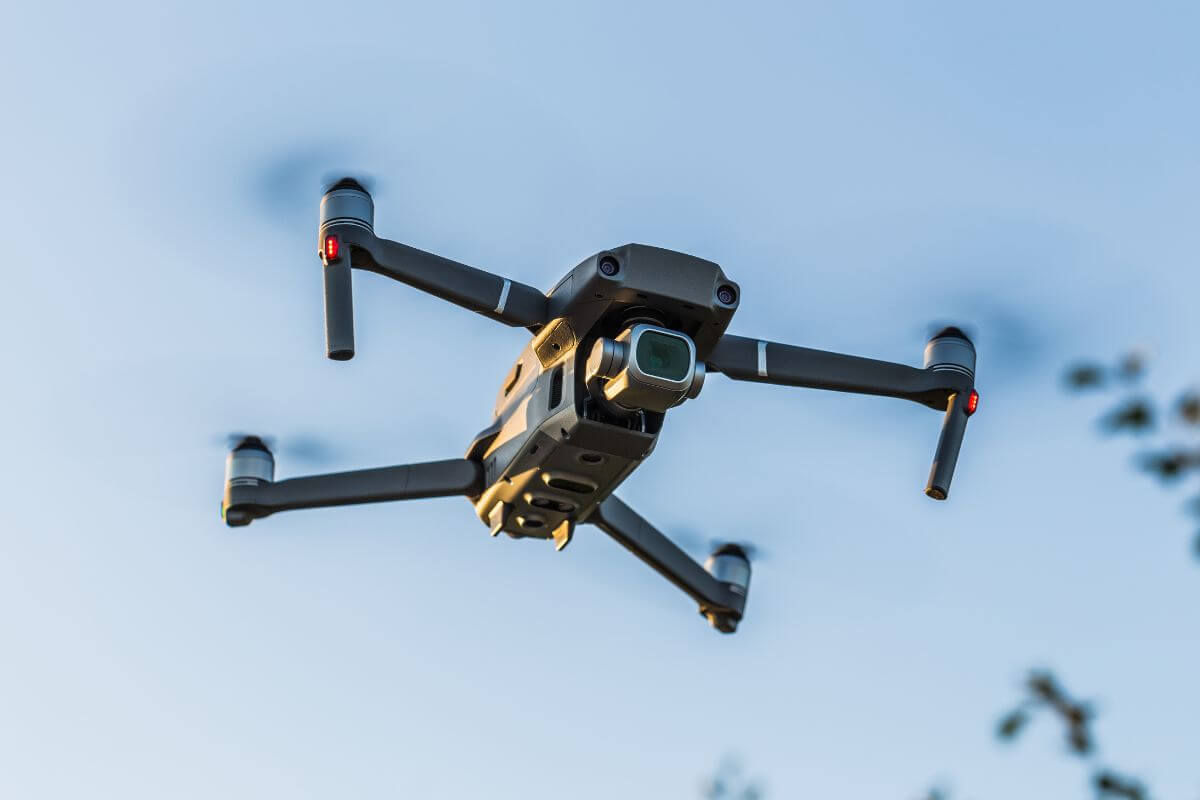
Montana’s hunting regulations are as expansive as its Big Sky, and let’s be clear – the use of aircraft in hunting is a no-go. You can’t kill, take aim, or even think about fur-bearing animals or game birds from an aircraft. The same goes for using an aircraft to locate your prey and then hunt them down on the same day.
And yes, this even extends to the modern marvels of UAVs or drones. So, if you were thinking of getting a bird’s-eye view on your next hunting trip, think again. The law doesn’t just stop at the shooting part; it’s also a no-no to use an aircraft to drive or stir up game animals. It’s the equivalent of trying to herd cattle from a helicopter – just not sporting.
Now, let’s say you spot a magnificent elk from above. Can you communicate the location to your buddy on the ground? Nope, not allowed. No air-to-ground communication signals to aid your pursuit.
To sum it up, the skies are for birds and planes, not for hunters looking for an unfair advantage. So, if you’re thinking of getting a little extra help from the air, you might want to reconsider.
2. Archery Equipment
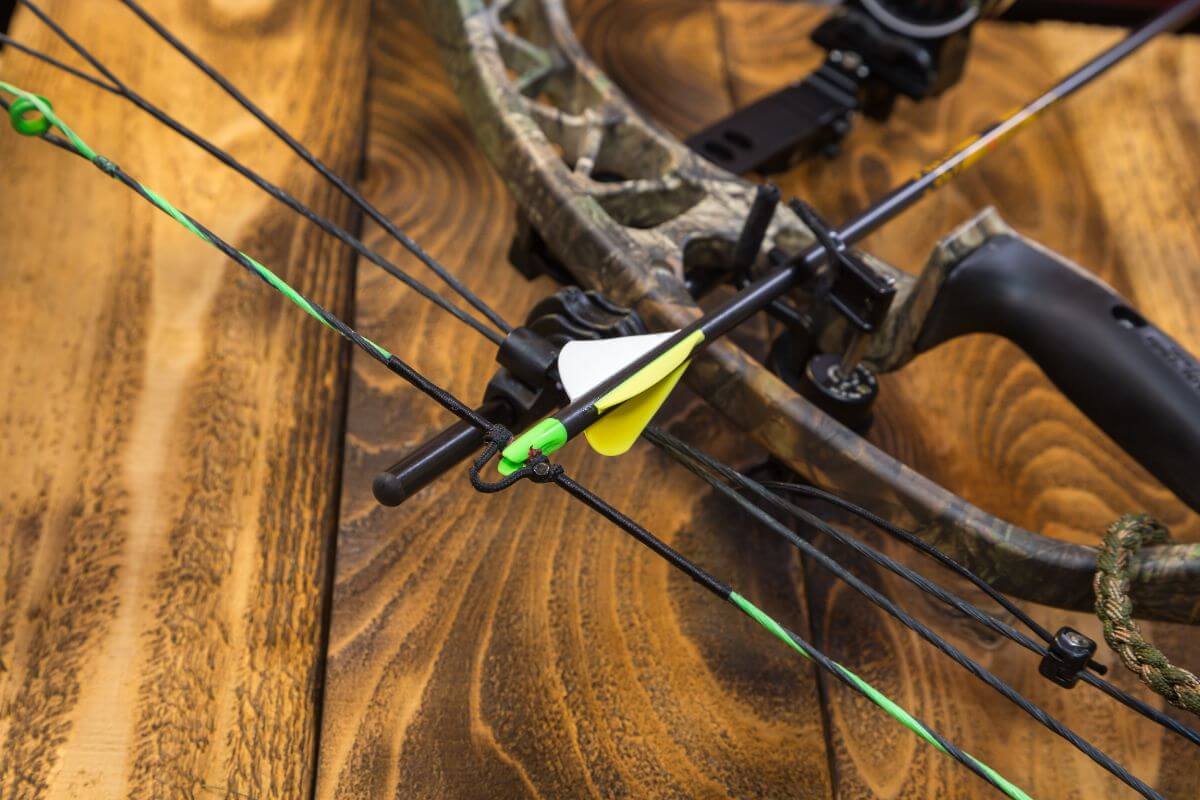
When it comes to Montana’s archery season, you’ve got to ensure your gear is up to par. Here’s the lowdown on what’s legal and what’s not in the world of bows and arrows.
Legal Archery Equipment in Montana:
- Hunting Bow – Your bow must be a longbow, flatbow, recurve bow, compound bow, or a combo of these designs. It has to be drawn by hand in one smooth action and be at least 28 inches long. If you’re a certified disabled bowhunter, you’re exempt from the hand-held requirement.
- Arrow – Your projectile should be at least 20 inches long, weigh no less than 300 grains with the broadhead, and have at least a 7/8-inch wide broadhead with two cutting edges.
Illegal Archery Equipment in Montana:
- Crossbow – Any device that holds the bowstring at draw without muscle power.
- Electronic or Battery-Powered Devices – Except for cameras solely for filming, any electronic or battery-powered devices are a no-go.
- Chemical or Explosive Devices – Don’t even think about it. No chemical or explosive attachments to your arrows.
When you’re in an archery-only area or hunting during an archery-only season, stick to the traditional stuff. The rules are there to keep the hunt fair and the playing field even for all of us.
3. Artificial Light
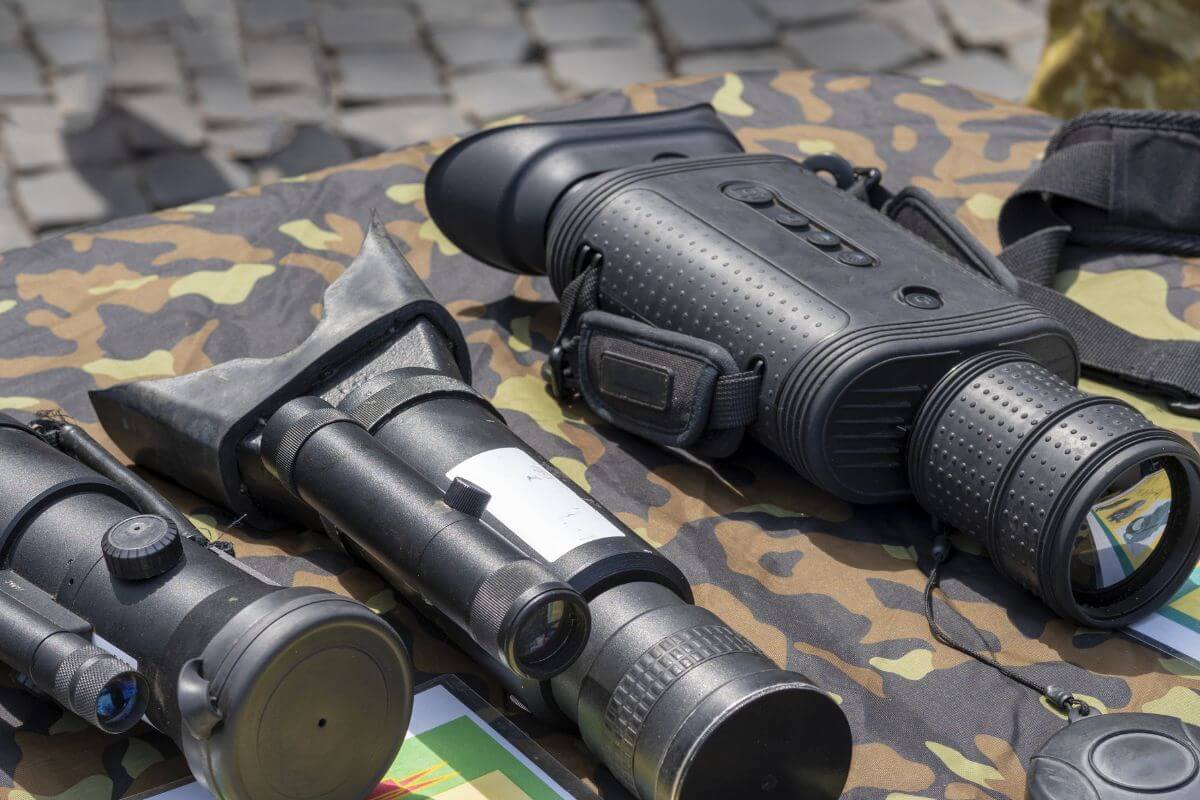
Montana’s regulations on artificial light in hunting are pretty straightforward: it’s a no-go. You can’t use any form of projected artificial light to take game animals or birds. So, no night vision goggles, no high-beam flashlights, and no laser pointers to guide your aim.
Here’s a quick rundown of the rules regarding artificial light:
- No projected artificial light is used to take game animals or birds.
- It is unlawful to use rifle scopes projecting artificial light or infrared light for illumination.
- Bow sights or arrows with artificial light, luminous chemicals, or electronics are off-limits, except for lighted nocks.
It’s all about fairness and ethical hunting practices. Using artificial light gives hunters an unfair advantage, and it can also be disruptive to the natural behavior of wildlife.
4. Baiting
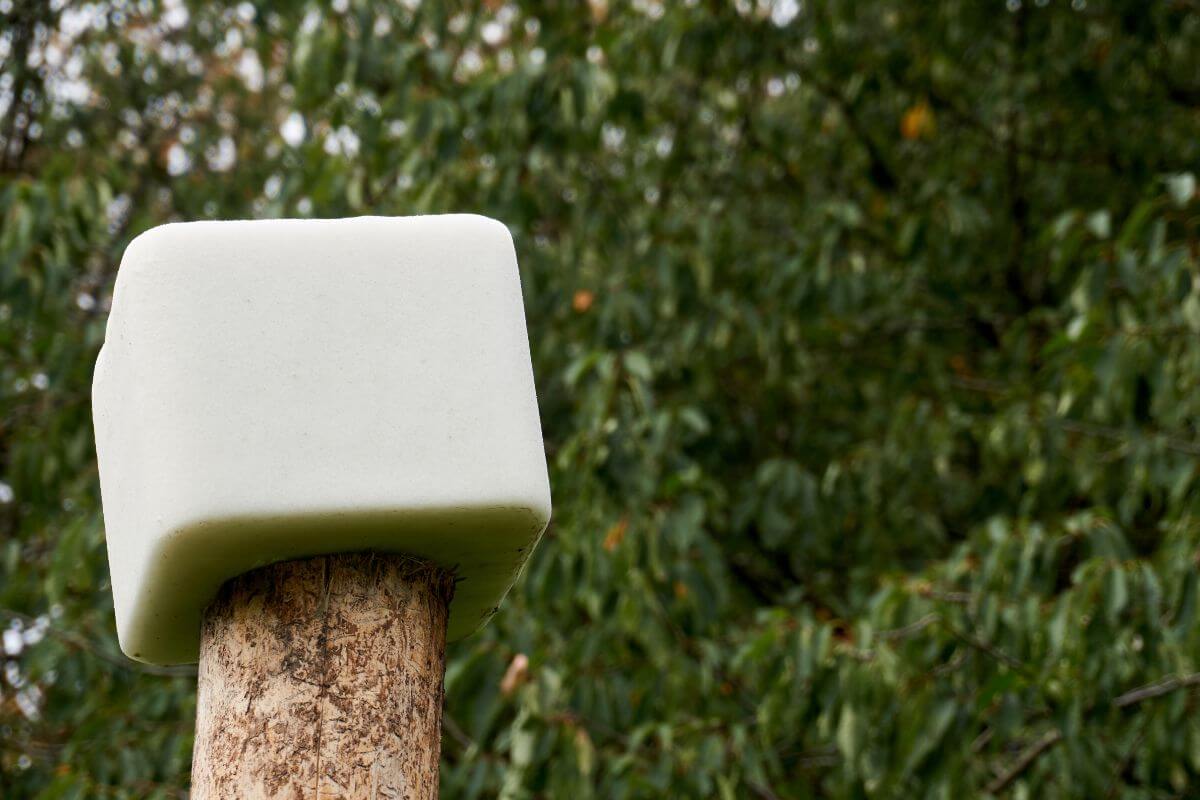
In Montana, the rules on baiting are as clear as a mountain stream. You can’t use any bait, salt lick, or even set up a trap to lure game animals or birds. Baiting is defined as the act of placing, exposing, depositing, distributing, or scattering food sources or salt to attract wildlife.
However, don’t let this restriction cramp your hunting style. You can still use artificial scents to bring game animals and birds to you, except for black bears. So, if you’re after a whitetail deer or a flock of turkeys, a well-chosen scent might just be your ticket to a successful hunt.
Just to be safe, always check the latest regulations on baiting and scents. The last thing you want is to be on the wrong side of the law in the middle of your hunting trip.
5. Carcass Disposal
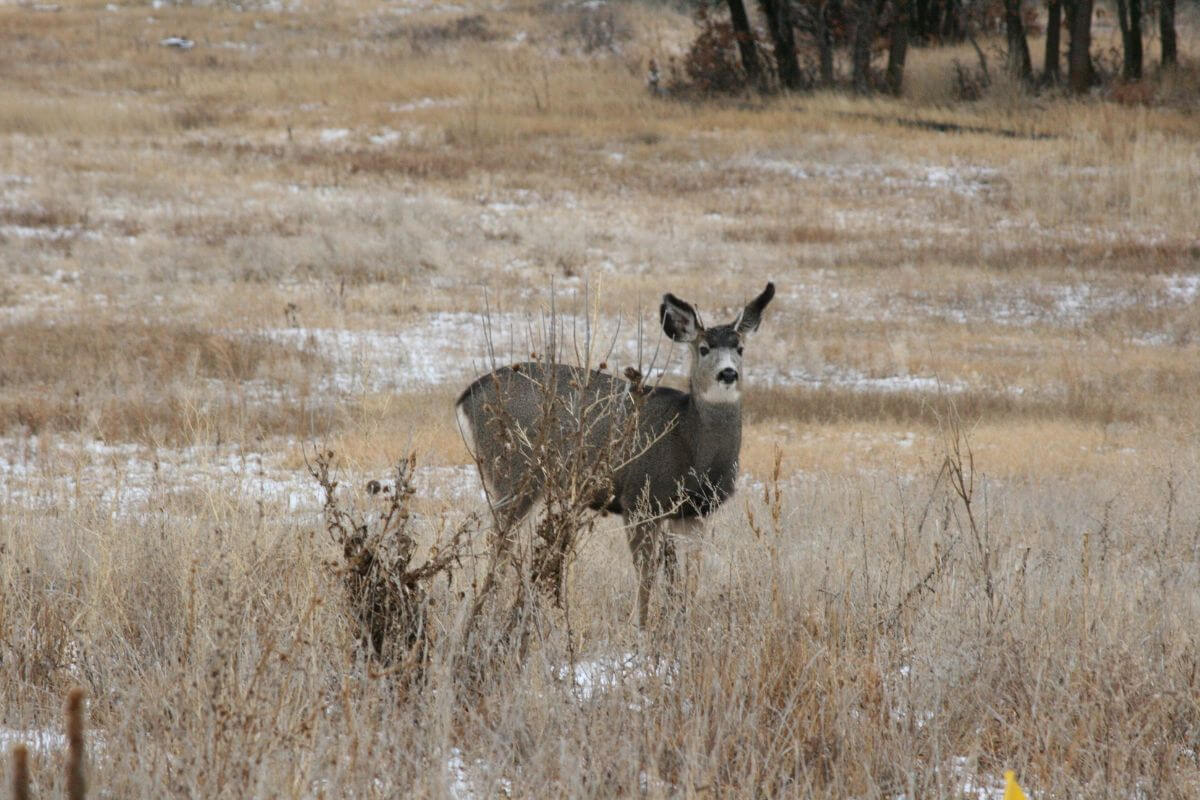
When you’re out in the field, the last thing on your mind might be what to do with a carcass. But it’s crucial to understand the rules around carcass disposal, especially in Montana.
Montana State Law is clear: dumping game carcasses on public land is illegal. This includes all state-owned and managed lands, fishing access sites, and wildlife management areas. If you’re caught, you could be facing a hefty fine and even lose your hunting and fishing privileges for up to a year.
But the reasons go beyond just legalities. Here are 3 important reasons why you shouldn’t just dump a game carcass:
- Chronic Wasting Disease (CWD) – It’s not just a matter of keeping things tidy. Leaving any part of the carcass in the field where the animal was harvested or disposing of it in a class II landfill is a critical step in preventing the spread of CWD. According to the Montana FWP, any part of the carcass can transmit the disease for at least 2 years.
- Legal Ramifications – A dumped carcass isn’t just unsightly; it’s illegal. And the consequences are serious. If a game warden catches you, you could be facing not just a fine but also the loss of your hunting and fishing privileges. It’s a risk that’s just not worth taking.
- Community Image – Hunting is not just a solitary activity; it’s a community. And a dumped carcass reflects poorly on that community. It’s not just about being a good citizen; it’s about being a good ambassador for the sport.
So what can you do instead? If you’re transporting a carcass for further processing, be sure to dispose of the brain and spinal column properly in a class II landfill. And if you’re harvesting an animal in the field, leave these parts at the kill site. It’s a small yet significant step that can make a big difference.
6. Check Stations
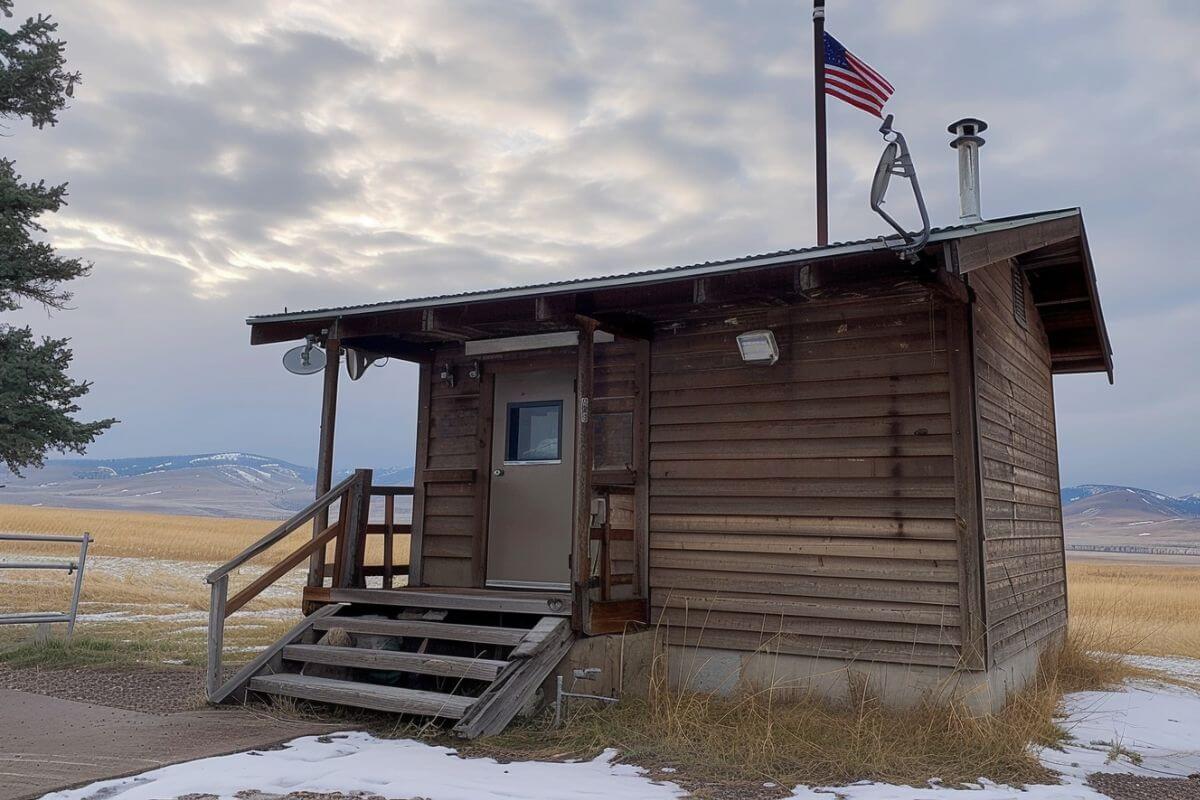
Just when you thought you were free and clear, Montana’s got a little surprise in store for you: check stations. No, it’s not a pop quiz on deer calls, but rather a mandatory stop for all hunters, whether you’ve bagged the big one or not.
Legally, you’re obliged to pull over at these designated check stations. They’re typically set up on roads leading to and from hunting areas. This is to ensure that hunting is being conducted safely and in compliance with regulations.
Here’s what you need to know about check stations in Montana:
- Interacting With Wildlife Officials – When you approach a check station, be prepared to interact with a wildlife official. They might ask you for your hunting license in Montana, including tags. The key is to be cooperative and respectful.
- Stopping at Check Stations – Even if you haven’t been successful in your hunt, you still need to stop. This is crucial. Skipping a check station can result in fines and penalties.
- Inspection Process for Game – If you do have a game to be checked, the process at the check station will involve inspecting your kill to ensure it complies with regulations. This is important for wildlife management and to prevent illegal hunting practices.
- Wildlife Data Collection – Check stations also serve as an opportunity for wildlife officials to gather data on the health and population of the game in specific areas. Your cooperation in this process is vital for the sustainable management of Montana’s wildlife.
So, as you plan your hunting trip in Montana, factor in these check stations as part of your journey. It’s a small price to pay to contribute to the responsible and sustainable management of the state’s wildlife.
7. Traps or Trapped Animals
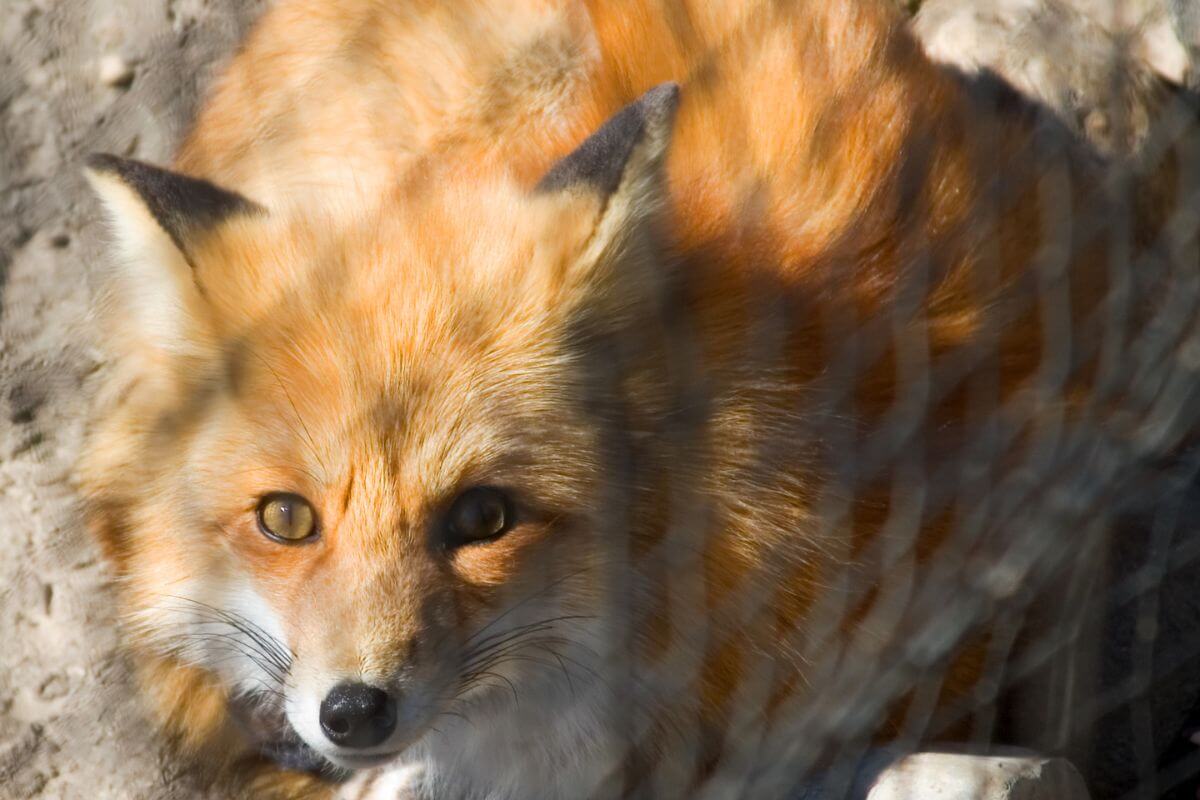
Montana’s hunting regulations are clear – it’s a big no-no to mess with someone else’s traps or the critters caught in them. You can’t destroy, disturb, or remove traps or snares that belong to another person.
And if you think you’re being a hero by freeing trapped animals, think again. Unless it’s a matter of livestock safety, you need the trap owner’s thumbs-up to release any wildlife.
Here are key things to remember when you come across traps while hunting in Montana:
- No Tampering With Traps – You can’t just go around dismantling traps or snares you come across. It’s not only illegal, but it’s also a major breach of hunting etiquette.
- Freeing Trapped Animals – If your heart aches for a fox or a coyote caught in a trap, you’ll need to locate the owner and get the green light. The only exception is from March 1 to Oct. 1 of each year, you can remove any snare if the animal poses a threat to livestock.
- Law Enforcement Exception – A law enforcement officer who is performing their duty is exempted from this requirement.
It is crucial to respect the property and belongings of others, including their traps and snares, and to seek permission before taking any action related to them. This rule is in place to ensure the safety and security of all individuals involved in trapping activities.
8. Dogs
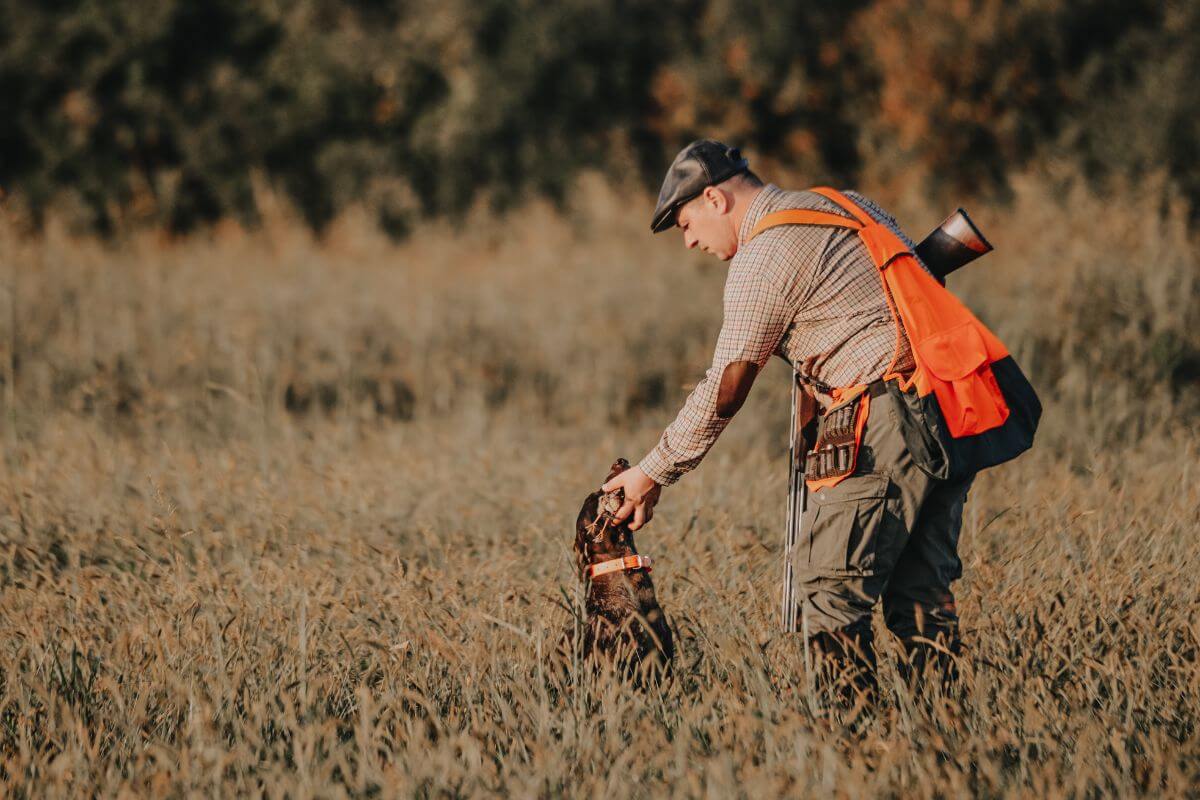
It’s not just you and your trusty rifle out there; your four-legged friend might be your secret weapon. In Montana, we love our dogs. They’re not just pets; they’re part of the family, and they’ve got a role to play in the hunt, too.
Montana law prohibits the use of dogs to chase game animals. However, there are exceptions, like hunting mountain lions and spring black bears, where specific regulations apply.
If you’re using a dog to recover or locate wounded game animals, there are rules to follow. Handlers must maintain physical control of the dog at all times, typically using a maximum 50-foot lead attached to the dog’s collar or harness. This is to ensure a humane and controlled approach to game recovery.
9. Evidence of Sex
In Montana, as in many states, it’s a requirement that a person who takes down a game animal must keep evidence of the animal’s sex with the carcass until it’s processed.
This regulation is in place to ensure hunters comply with specific hunting seasons and gender restrictions that help maintain healthy wildlife populations. Here’s the lowdown:
- Retain Evidence – If you’re hunting with a special license that allows you to take either sex of the animal, you’re in the clear. But if you’re hunting under a license that specifies the sex, you need to keep evidence of the animal’s sex until it’s processed. This could be the reproductive organs, or in the case of animals where the harvest is determined by antler or horn size, those must be retained.
- Not Necessarily Attached – The evidence of sex doesn’t have to be naturally attached. For example, if you’re hunting in a district where harvest is limited by antler point or horn size, you need to keep those antlers or horns until the carcass is processed.
It’s all about ensuring that hunting is not only a sport but also a conservation effort. By tracking the sex and age of animals taken, wildlife management can better understand and regulate hunting seasons, ensuring the long-term sustainability of the state’s diverse game species.
10. Firearms
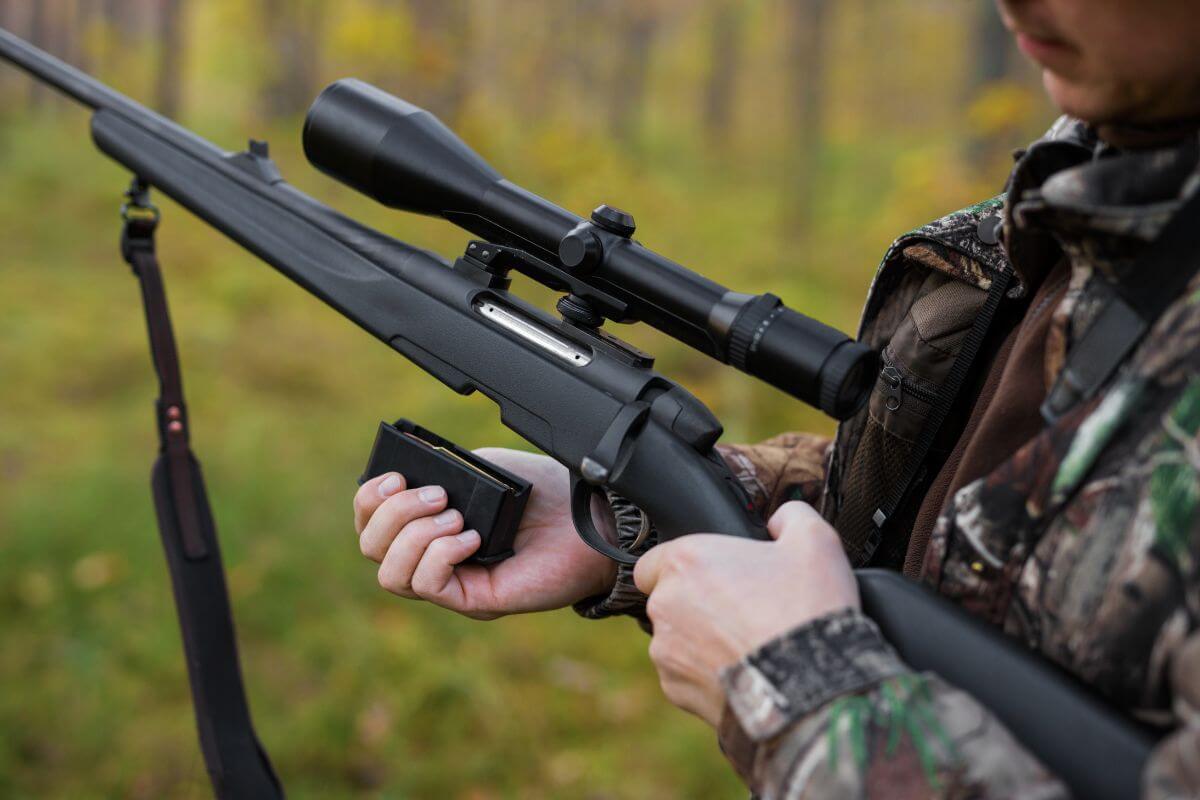
When it comes to arming yourself for the hunt, Montana is quite liberal. You can use rifles, handguns, shotguns with certain ammunition, muzzleloaders, archery equipment, and even crossbows. But don’t go pulling out your old slingshot or setting up a snare – those are a no-go.
For more specifics on which firearms are allowed when hunting in Montana:
- Firearms – Rifles, handguns, and shotguns with 0, 00, or slugs are all fair game. There are no caliber or magazine/round capacity restrictions. You can also use rifle scopes with illuminated reticles, built-in range-finding capabilities, and “red dot” scopes.
- Archery and Crossbows – If you’re more of a bow-and-arrow kind of hunter, you’re in luck. Archery equipment and crossbows are also lawful for taking game animals.
Always follow the safety guidelines, respect property boundaries, and be aware of your surroundings. And of course, ensure you have the appropriate licenses and permits.
11. Hunter Harassment
It’s essential to remember that while you’re out in the Montana wilderness, you’re not alone in your pursuit of game. Hunter harassment, or intentionally interfering with someone’s legal hunting activity, is a big no-no, and for good reason.
It’s all about respecting each other’s space and pursuits in the great outdoors. Here’s a quick rundown of what constitutes hunter harassment:
- It is unlawful to interfere with the lawful taking of a wild animal intentionally.
- It’s also a no-go to disturb an individual who’s lawfully hunting with the intent to prevent them from taking the animal.
The key here is intent. If you’re not deliberately trying to mess up someone else’s hunt, you’re likely in the clear. It’s all about being mindful and respectful of others sharing the same hunting grounds.
So, what should you do if you feel like you’re being harassed while hunting? Just like in any other situation, communication is key. Politely let the other party know about your concerns, and if necessary, don’t hesitate to reach out to the local authorities.
12. Hunter Orange Requirement
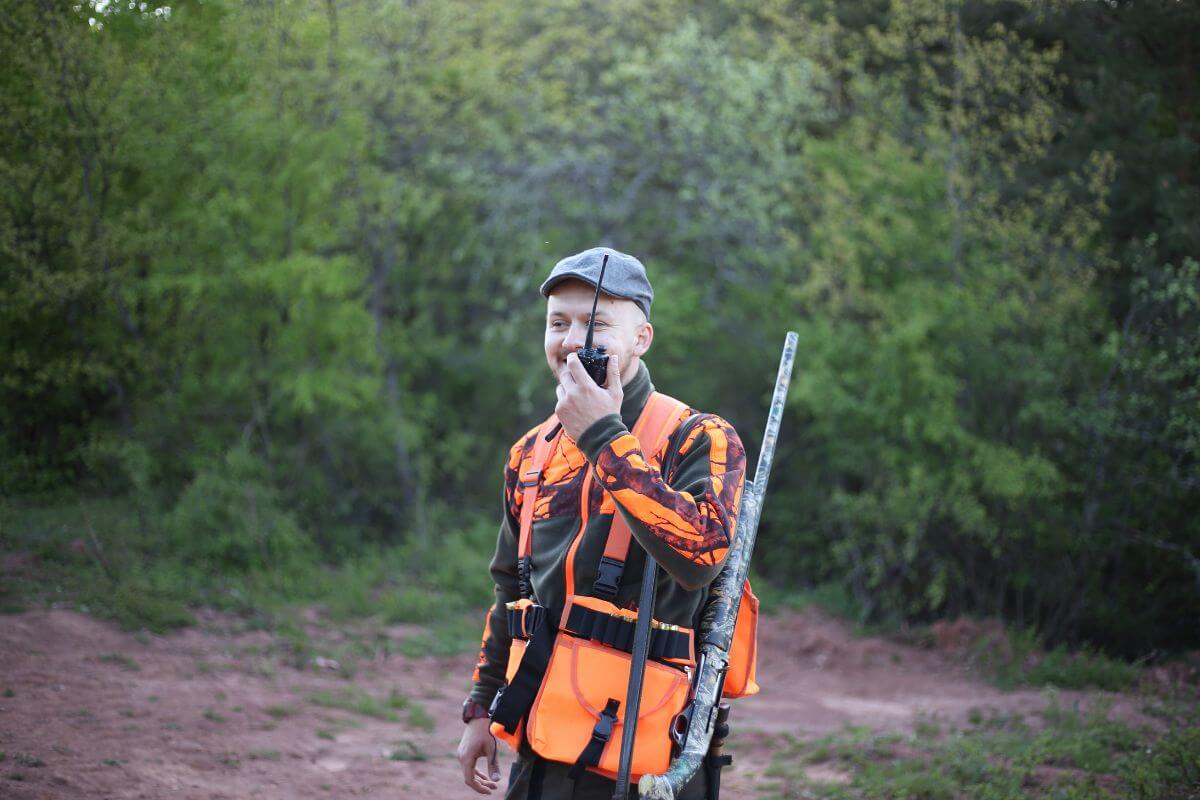
Hunters are required to wear hunter orange for safety purposes, and the specific requirements vary based on the type of weapon being used. Let’s break it down:
- Firearm Hunters – If you’re a firearm hunter or accompanying one as an outfitter or guide, you are required to wear a minimum of 400 square inches of hunter-orange material above the waist. This ensures you’re visible, reducing the chances of a hunting accident.
- Archery Hunters – If you’re a licensed bowhunter, the rules are a bit different. During the Archery Only Season or in specific archery-only hunting districts, you’re exempt from the hunter-orange requirement. However, if there’s a concurrent firearm season or you’re hunting during the general (firearm) season for various species, you’ll need to add that pop of orange to your ensemble.
These requirements are in place to ensure the safety of all individuals engaged in hunting activities, as the fluorescent color makes hunters more visible to others in the area. By following these regulations, hunters can help prevent accidents and ensure a safer hunting experience for everyone involved.
13. Hunting Hours
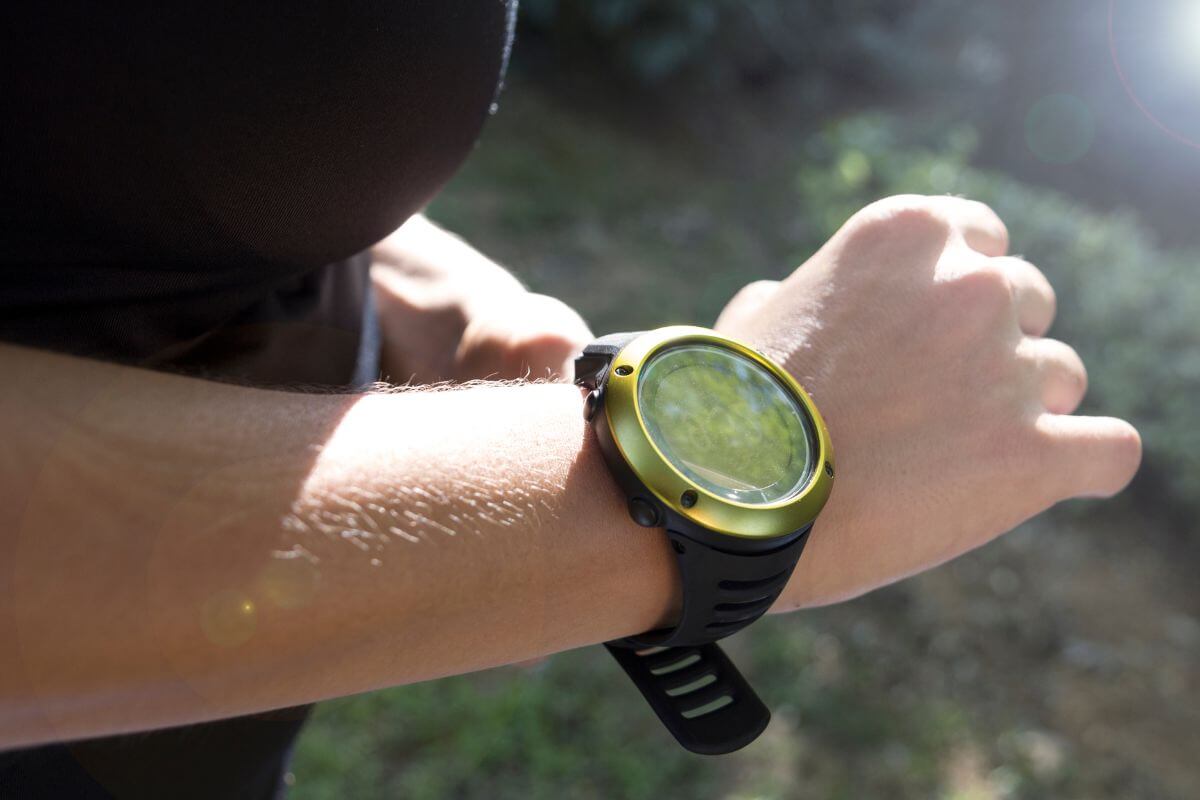
Hunting hours, or as I like to call it, the golden window, are more than just a legal requirement – they’re a key to a successful and ethical hunt. In Montana, game hunting is permitted from one-half hour before sunrise to one-half hour after sunset. This timing is designed to ensure hunter safety as well as the game.
The extended hours around sunrise and sunset also allow you to soak in the breathtaking Montana landscapes – there’s nothing quite like watching the world wake up or wind down in the great outdoors.
The golden rule here is to plan your hunt to ensure you’re back at your vehicle or campsite well before nightfall. This not only keeps you safe but also prevents unnecessary stress on the wildlife you’re sharing the woods with.
14. Warden’s Inspection
As a hunter in Montana, you might find yourself in a situation where you need to show your catch to a Fish, Wildlife & Parks (FWP) Enforcement officer. This is all part of the inspection program, ensuring that all game animals, birds, fish, and furbearers taken comply with regulations.
Here’s what you should know about the inspection process:
- Be Prepared – Always have your hunting license, permits, and any other relevant documentation readily accessible. It not only makes the inspection process smoother but also shows your commitment to responsible hunting.
- Respect the Process – If a warden requests to inspect your catch, it’s important to comply. Remember, their job is to ensure that hunting is sustainable and in line with conservation efforts.
- Honesty is Key – If you’re asked about your hunting methods or the location of your catch, be honest. FWP officers are there to enforce regulations, not to penalize hunters who are following the rules.
- Learn from the Experience – If the inspection leads to a discussion with the officer, use it as an opportunity to learn. Wardens often have valuable insights about the local wildlife and can offer tips for future hunts.
Inspections are not meant to be intimidating; they are simply a part of the process to ensure that hunting in Montana remains sustainable and ethical. So, if a warden asks to see your harvest, think of it as an opportunity to show off your skills and your commitment to responsible hunting.
15. Interstate Wildlife Violator Compact
Montana is a proud member of the Interstate Wildlife Violator Compact (IWVC). The IWVC is like a big handshake between states, ensuring that if you break hunting, fishing, or trapping laws in one member state, your suspension can be recognized in other member states.
Quick things to know about the Interstate Wildlife Violator Compact (IWVC) in Montana:
- The IWVC is Your Accountability Partner – If you’re a member of the ‘I broke a hunting law’ club in Montana, other member states are likely to know about it.
- No License, No Luck – If you’ve had your hunting, fishing, or trapping privileges suspended in a member state, it’s a no-go to try and snag a license, tag, or permit in another.
- Pay Your Dues – If you’ve been suspended in a member state, the best course of action is to own up, pay your dues, and wait out your suspension period.
So, if you’re planning to hunt in multiple states, it’s essential to keep your nose clean and your permits up to date. The IWVC isn’t here to ruin your hunting dreams; it’s here to make sure everyone plays by the same rules, no matter where you roam.
16. Kill Site Verification
When you’ve just bagged a prized elk or a cunning coyote, your job isn’t quite done yet. If a Department Game Warden requests, you might need to revisit your kill site. This is a standard procedure to ensure hunting or trapping has been conducted within the legal boundaries.
Here’s why you might be asked to return to a kill site in Montana:
- Verification – The Game Warden may want to verify that the animal was taken legally and ethically.
- Compliance – It ensures that hunters are following the rules and regulations set by the Montana Fish, Wildlife & Parks.
This process may seem like an extra step, but it’s an essential part of responsible hunting. It ensures that wildlife is being managed sustainably and that hunting practices are in line with conservation efforts.
17. Landowner Permission
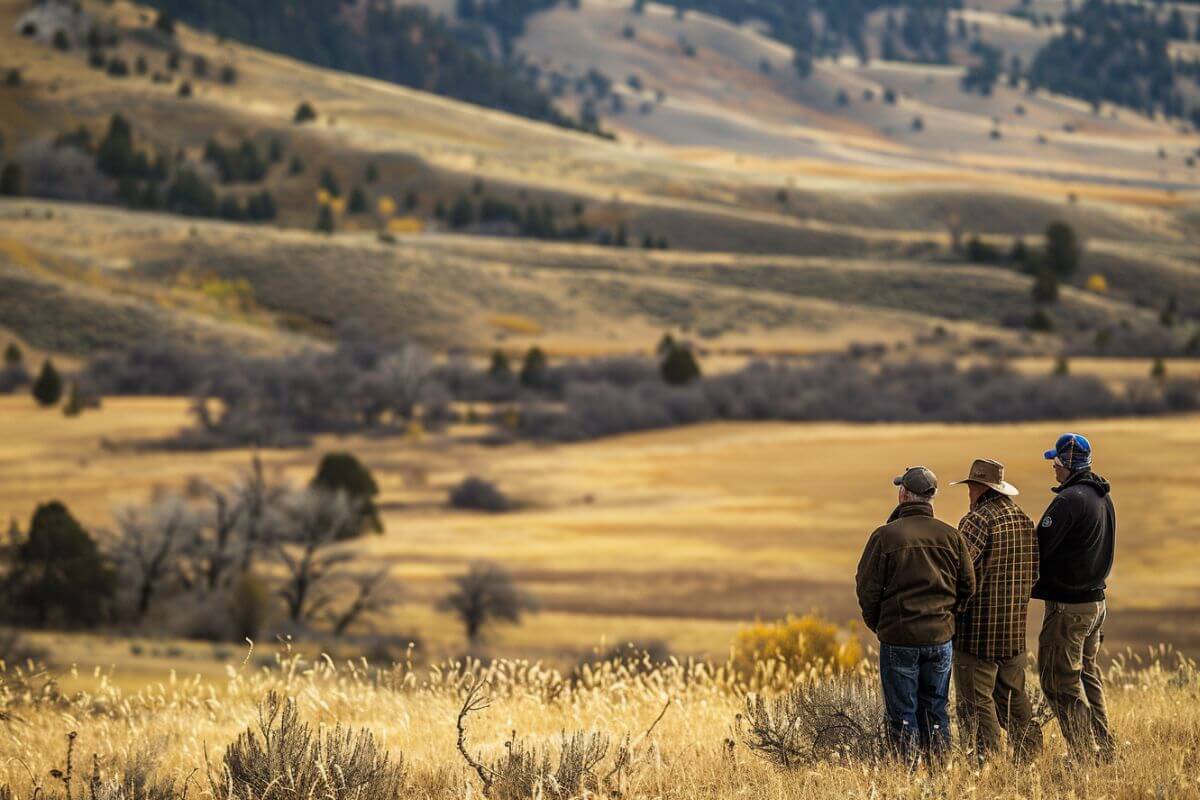
It is important to note that it is the responsibility of the hunter to seek and receive permission before entering private property for hunting. Here’s what you need to know regarding landowner permission when hunting in Montana:
- Landowner Consent is Key – According to Montana law, you can’t just waltz onto private property and start hunting. You need explicit permission from the landowner, lessee, or their agents. This applies to all types of wildlife, from game animals to upland game birds.
- It’s Not About the Signs – Even if you don’t see a “No Trespassing” sign in sight, don’t assume it’s fair game. The law is clear: you need that green light from the folks in charge, posted land or not.
- How to Get Permission – The best way to secure this permission is through a written agreement. This not only protects you legally but also sets clear expectations for both parties. A little courtesy can go a long way – it’s your ticket to accessing some of Montana’s prime hunting grounds.
I’ve had my fair share of private land hunts, and let me tell you, the thrill of the chase is even more exhilarating when you know you’re on the right side of the law. So, next time you’re eyeing that perfect spot on someone’s property, make sure you’ve got your permission slip in hand.
18. License and Permit Possession
The Montana Fish, Wildlife & Parks (FWP) offers a variety of hunting and fishing licenses and permits, including but not limited to:
| By Residency | By Species | Other Licenses |
| Resident Hunting Licenses | Antelope Licenses | Bow-and-Arrow Licenses |
| Nonresident Student Licenses | Deer Permits & Deer Licenses | Limited Licenses & Limited Permits |
| Nonresident Combination License | Deer & Elk Combination Licenses | Base Hunting License Fee |
When it comes to hunting in Montana, your license is your golden ticket. Here are the nitty-gritty rules to ensure you’re on the right side of the law:
- One and Only – You can’t be a multi-license holder. It’s strictly one license or permit per class or species, except when authorized by the commission.
- Always Carry – Don’t leave home without it. The law demands that you have your hunting license or permit on you at all times during your hunting expedition.
- No Refusals – If a warden or an officer asks to see your license, you better show it. Refusing to exhibit your license is a big no-no.
- Hands Off – Your license is your own, and you can’t pass it around like a hot potato. No altering, loaning, or transferring it to someone else.
- Personal – Your license is as personal as your favorite hunting rifle. Only you, the permit holder, can use it.
- No Souvenirs – It’s tempting to attach your license to a game animal killed by someone else, but that’s a strict violation.
- Exceptions – There are exceptions, like using your spouse’s or minor’s license while hunting together. Also, if you attach a valid license to a lawfully killed game animal, you’re in the clear.
You can apply for permits and purchase most general hunting licenses online through the FWP Online Licensing system. Just remember, your license isn’t just a piece of paper; it’s your gateway to an unforgettable hunting experience. So, respect the rules, carry your license, and let the hunt begin!
19. License Validation or Tagging
When you’ve successfully bagged a game animal, the excitement can be overwhelming. But before you start planning the feast, there’s a crucial step you need to take – license validation or tagging.
Here’s what the Montana FWP licensing regulations state:
- Before you leave the kill site, you must physically validate your license or tag, or cut out the date of the kill.
- An unvalidated license or tag must stay with the carcass if any substantial portion remains unconsumed.
- If the license or tag was electronically validated, you’re good to go without physically carrying it.
This process isn’t just a formality; it’s a legal requirement designed to monitor and manage wildlife populations. I’ve had rangers come by to check my licenses in the past, and believe me, it’s best not to be caught unprepared.
For any queries or clarifications, the Montana FWP Licensing Department is your go-to. You can contact Licensing to ensure you’re following the current regulations to the letter.
20. Littering

As a hunter, you’re not just navigating the wilderness; you’re also navigating a web of regulations that ensure the preservation of Montana’s natural beauty. And one rule that’s as clear as the big sky itself is: leave no trace.
It’s unlawful to dump or leave any garbage, dead animal, or refuse in or upon any highway, road, street, or alley of the state, public property, or privately owned lands where hunting or fishing is permitted. Here’s a breakdown of where you can’t leave your mark in Montana:
- In or upon any highway, road, street, or alley of the state
- In or upon any public property, highway, street, or alley under state control
- Within 200 yards of a public highway, road, street, alley, or public property
- On privately owned property where hunting, fishing, or other recreation is permitted
If you’re convicted of littering while hunting, fishing, or camping, you could forfeit your hunting, fishing, or trapping license and the privilege to partake in these activities in Montana for a year. It’s a harsh penalty, but it underscores the seriousness of maintaining the state’s pristine environment.
So, as you’re packing for your next outdoor adventure, remember to bring back everything you took with you. It’s all part of being a responsible and respectful hunter, and it ensures that Montana’s natural splendor remains unspoiled for generations to come.
21. Marked or Radio-Collared Animals
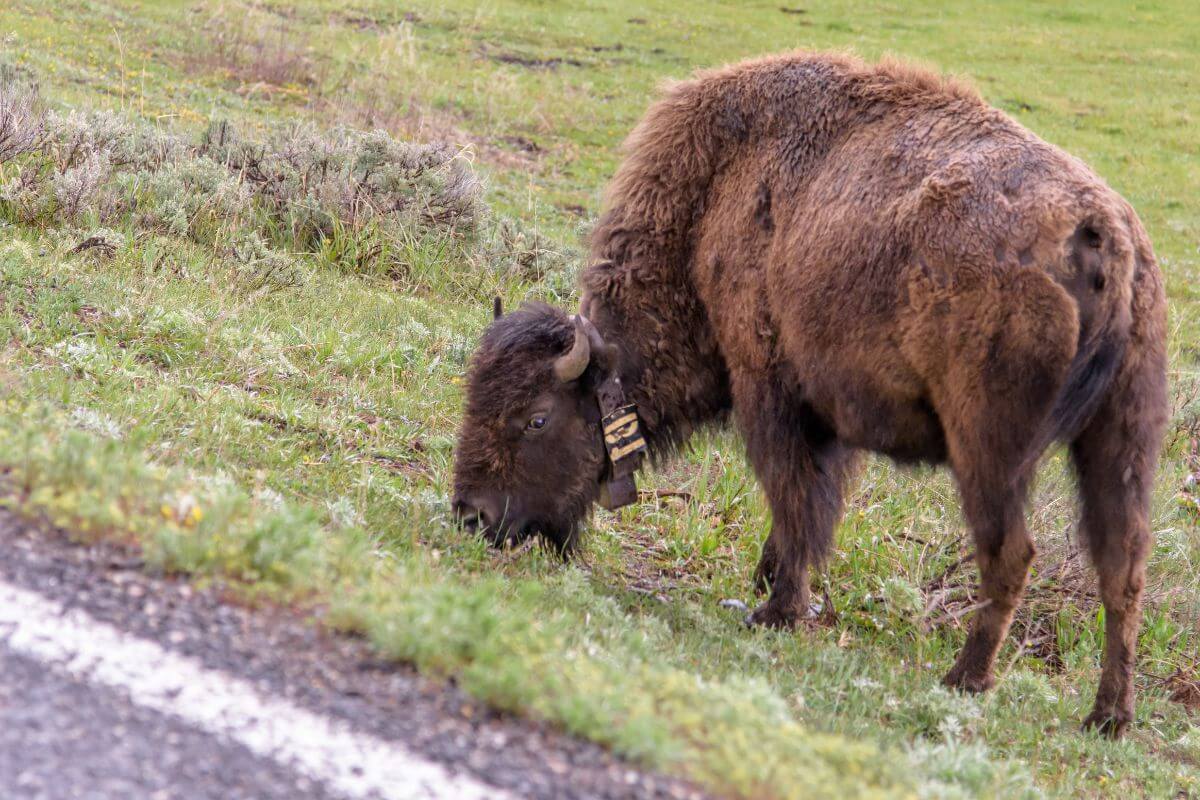
In the world of hunting, the last thing you want is a case of mistaken identity. But what if the deer or elk you’ve got in your sights is sporting a fashionable radio collar or a chic ear tag? Before you start second-guessing your hunting expedition, let me assure you, it’s all above board.
It is lawful to shoot game animals that have radio collars, neck bands, ear tags, or other markers, but here’s the catch: these markers and radio collars must be returned to FWP (Montana Fish, Wildlife & Parks).
If you do end up taking down a marked animal, it’s not just the trophy you’re after. You’ve got to report the killing to the local FWP office. This information helps the state keep tabs on the population and ensures the conservation efforts are on point.
So, the next time you’re out in the Montana wilderness and you spot a deer with a collar that seems to be calling out to you, remember these two things: you can take the shot, and you can’t keep the collar.
22. Human Odor Control
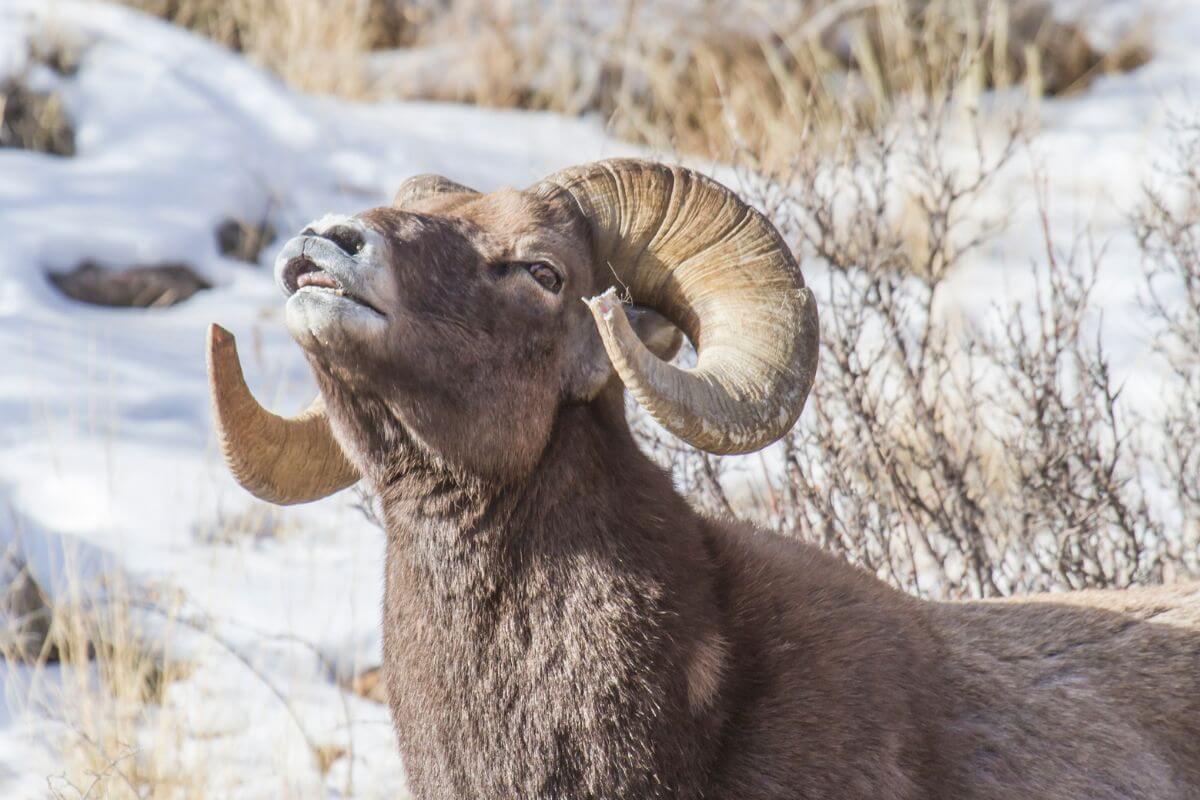
When it comes to getting the jump on your game, it’s not just about your aim; it’s also about odor control. The Montana Fish & Wildlife (F&W) Commission understands that the human scent can be a dead giveaway to our wild counterparts.
So, the Montana F&W Commission has given the nod to the use of artificial scents and natural glandular scents, as long as they meet certain criteria, which include:
- Urine-based and natural glandular scents are your go-to for masking human odor.
- These scents are A-OK if they come from a state or province without chronic wasting disease.
- Make sure the product packaging displays the stamp of approval from the Responsible Hunting Scent Association (RHSA).
So, next time you’re prepping for a hunt, consider adding these scent-masking essentials to your gear list. It’s that extra step that could make all the difference between a successful hunt and a wild goose chase – or should I say, a wild elk chase!
23. Motion-Tracking Devices

You might be a tech-savvy hunter, but before you consider using motion-tracking devices to give you an edge in hunting, let’s pause. The Montana F&W Commission has some restrictions on your high-tech aspirations.
It’s a no-go to using electronic motion-tracking devices specifically designed to follow game animals and relay their movements to you. But what exactly counts as a motion-tracking device in the eyes of the law? According to the F&W Commission, it includes:
- Remote-operated cameras or video devices that can send real-time info, pictures, or videos
- Seismic devices
- Thermal imaging devices
- Satellite and radio telemetry devices
But here’s the twist: A radio-tracking collar on your trusty hunting dog is legit. As long as you’re using it for lawful hunting activities, you’re in the clear.
24. Motorized Vehicles
Hunting from any motorized or drawn vehicle is a no-go. You’ve got to have both feet on the ground and your body outside the vehicle to make it legal. There’s an exception – those with a Permit To Hunt From A Vehicle are in the clear.
Here are other things to know about the legalities of motorized vehicles when hunting in Montana:
- No Harassing – No using your motorized vehicle to play cowboy and corral game animals, or just generally harass them. It’s not cool, and it’s not legal.
- State Lands – On state land, keep your motor-driven vehicle on the road or trail, unless it’s been posted as closed by the land management agency.
- Private Lands – If you’re on private land, it’s a no-brainer – get permission from the landowner before you start revving your engine.
- Off Road-Federal lands – When it comes to federal public lands, you can’t just go off-roading willy-nilly. Stick to legal routes, especially during game retrieval.
- Boats – Boats are a bit more straightforward. If you’re hunting any game animal or upland game birds from a boat, make sure the motor is off or the sails are furled and the vessel has come to a stop.
- OHVs (including ATVs, UTVs, and dirt bikes) – For off-highway vehicles (OHVs), residents need to register with the county treasurer, display a license plate, and make necessary street-legal modifications. Nonresident hunters are required to obtain a temporary-use permit to operate their OHVs in Montana.
In a state as vast and varied as Montana, it’s crucial to respect the rules that govern the use of motorized vehicles. Whether you’re cruising through state lands or revving up your OHV, following these regulations ensures a harmonious coexistence between hunters and the great outdoors.
25. Outfitters and Guides
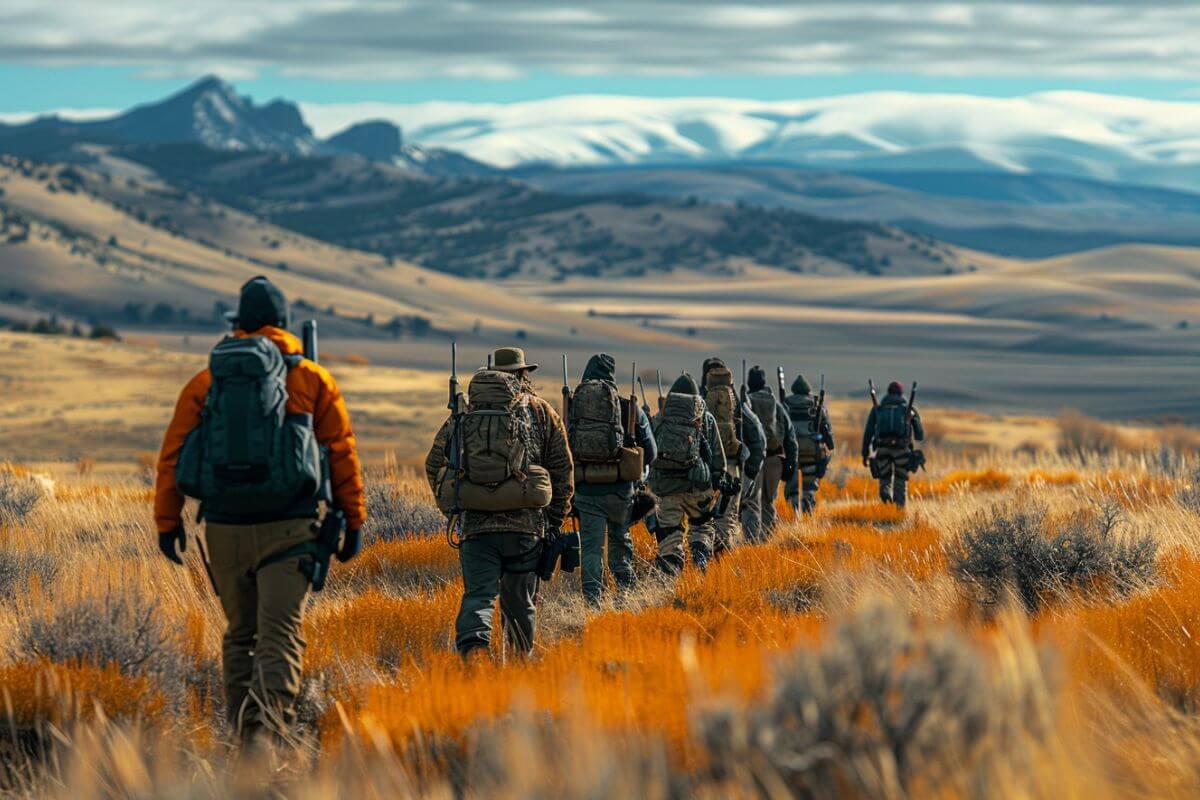
If you’ve ever dreamt of being the ultimate trailblazer, leading hunting expeditions through Montana’s rugged terrains, you’re not alone. But before you start planning your “Wild West” adventure, let’s talk about the legalities.
Here’s a quick rundown of the key points about outfitters and guides laws in Montana:
- You need a license to act as an outfitter or guide.
- It’s illegal to engage in outfitting or guiding without a license.
- It’s unlawful to hire an outfitter or guide not licensed by the Department of Labor and Industry.
In Montana, you can’t just call yourself an outfitter or guide. If you’re thinking of offering your services as a hunting guide, you need to get licensed. The same goes for anyone who wants to operate an outfitting business.
26. Possession of Wildlife Parts
It is unlawful for any person to possess, ship, or transport all or part of any game fish, bird, game animal, or fur-bearing animal that was unlawfully killed, captured, or taken, whether within Montana or outside of Montana.
However, there are exceptions to this rule. Here’s the low-down on what you can possess and transport legally in Montana:
- You’re in the clear to possess hides, heads, or mounts of lawfully taken game species. Just remember, grizzly bear hides, heads or mounts are off-limits for sale or purchase unless under federal law.
- If you stumble upon naturally shed antlers or antlers with a skull attached from a game animal that died of natural causes, you’re good to go. But there’s a catch – you need to report and present them to the department within 48 hours for inspection and a $25 permanent pin.
- The bones of elk, antelope, moose, or deer that have died naturally are also fair game.
- Carcasses and parts of certain animals killed in vehicular collisions can be taken and possessed, but only with a Vehicle-Killed Wildlife Salvage Permit.
While you can recover and possess certain parts, like antlers and bones, from animals that have died naturally or in vehicular collisions, this doesn’t extend to state parks. So, leave those horns and skulls where you found them in state parks, or you might be in for a legal tangle.
And if you’re not the one who bagged the game, but you’re transporting it, you’re in luck. An individual other than the license holder can transport lawfully taken, properly tagged game animals that comply with the “Evidence of Sex Requirements.”
27. Predatory Animals and Nongame Hunting
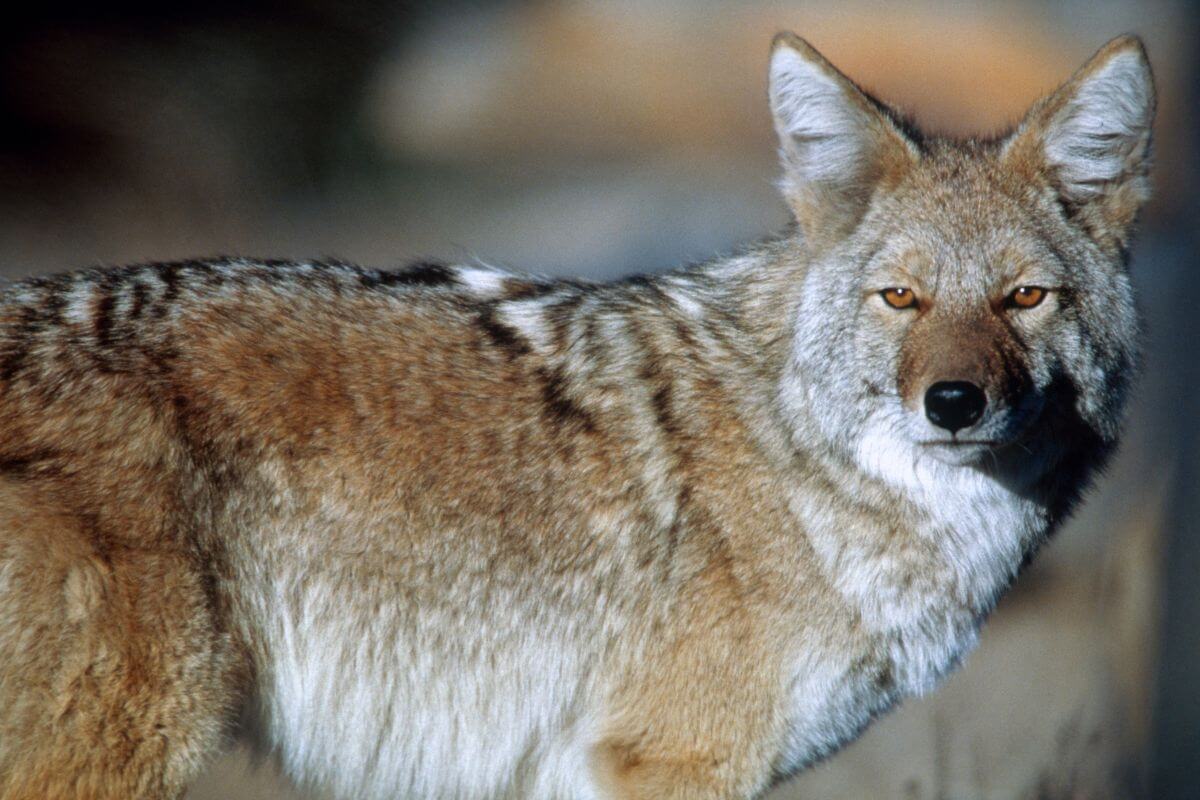
Montana’s open season on predatory animals and nongame species is like the “all-day breakfast” of the hunting world – it’s always available, and no waiting is required. Whether you’re a resident or a nonresident hunter, you can legally hunt these critters in Montana year-round without a license.
Now, before you start packing your bags, here’s the lowdown on what you can hunt in Montana without a license:
- Predatory Animals – This category includes coyotes, weasels, striped skunks, and spotted skunks (civet cats). They’re fair game anytime, anywhere, except for National Parks and Wildlife Refuges, of course.
- Nongame Species – This is a pretty diverse group, including badgers, raccoons, red foxes, hares, rabbits, ground squirrels, marmots, tree squirrels, porcupines, and prairie dogs. If it’s not specifically regulated as a game species, it’s considered nongame.
But wait, there’s a catch – if you’re aiming to hunt on State School Trust lands, you’ll need a Conservation License or a State School Trust lands recreational use license. And if you’re eyeing private property, don’t forget to get the landowner’s permission first.
When hunting, it’s not always about the trophy. In some cases, these animals are seen as pests, and hunting helps control their populations. Plus, it can offer a different kind of hunting challenge, adding variety to your outdoor pursuits.
28. Public Roadways
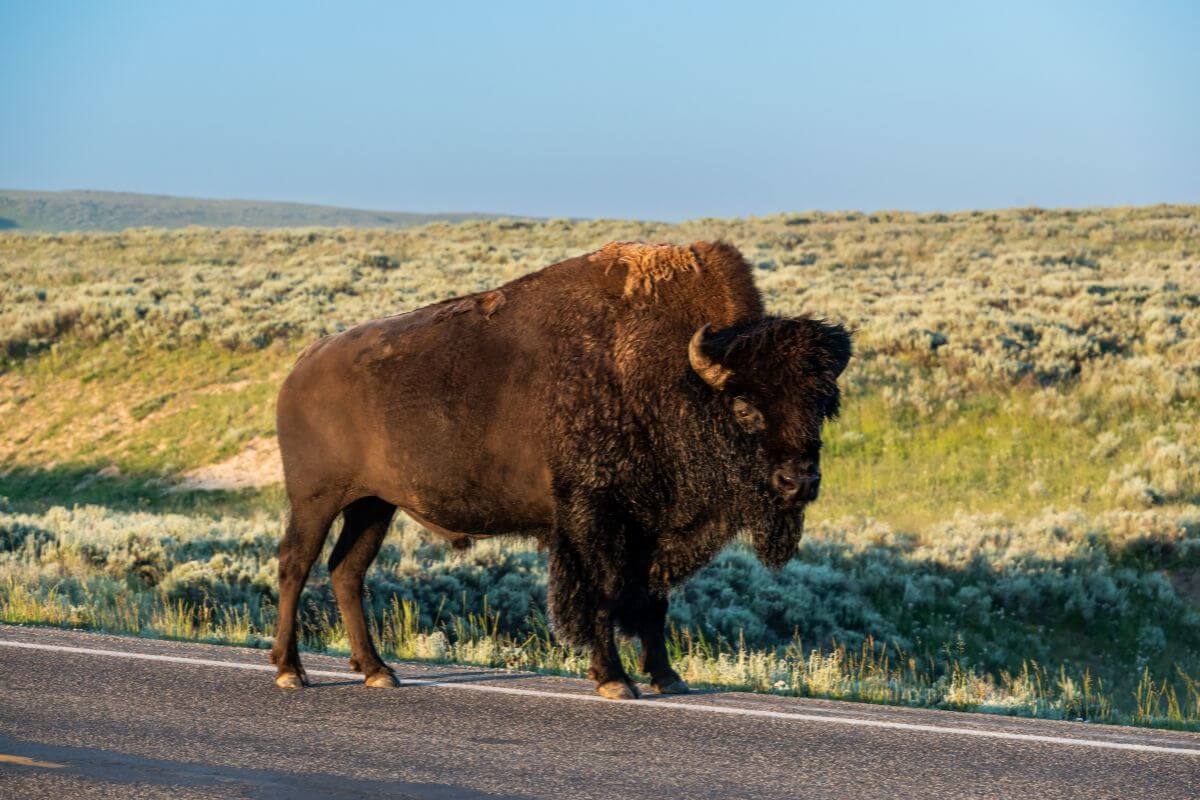
Montana’s highways are more than just a means of getting from A to B; they’re also the lifelines of the state’s transportation system. And just as you wouldn’t want to be the cause of a traffic jam, it’s important to note that hunting on or from a public roadway is a big no-no in Montana.
The Montana Fish, Wildlife & Parks Department makes it clear that it’s unlawful to hunt or even attempt to hunt any game animal from, on, or across any public highway. This also extends to the shoulder, berm, barrow pit, or right-of-way of any public highway.
In layman’s terms, if it’s a publicly maintained way open to vehicular travel, it’s off-limits for hunting. It’s easy to see why these regulations are in place. Hunting near or on public roads is not only a safety hazard for both hunters and drivers, but it can also be disruptive to the local community and wildlife.
29. Recorded Animal Sounds
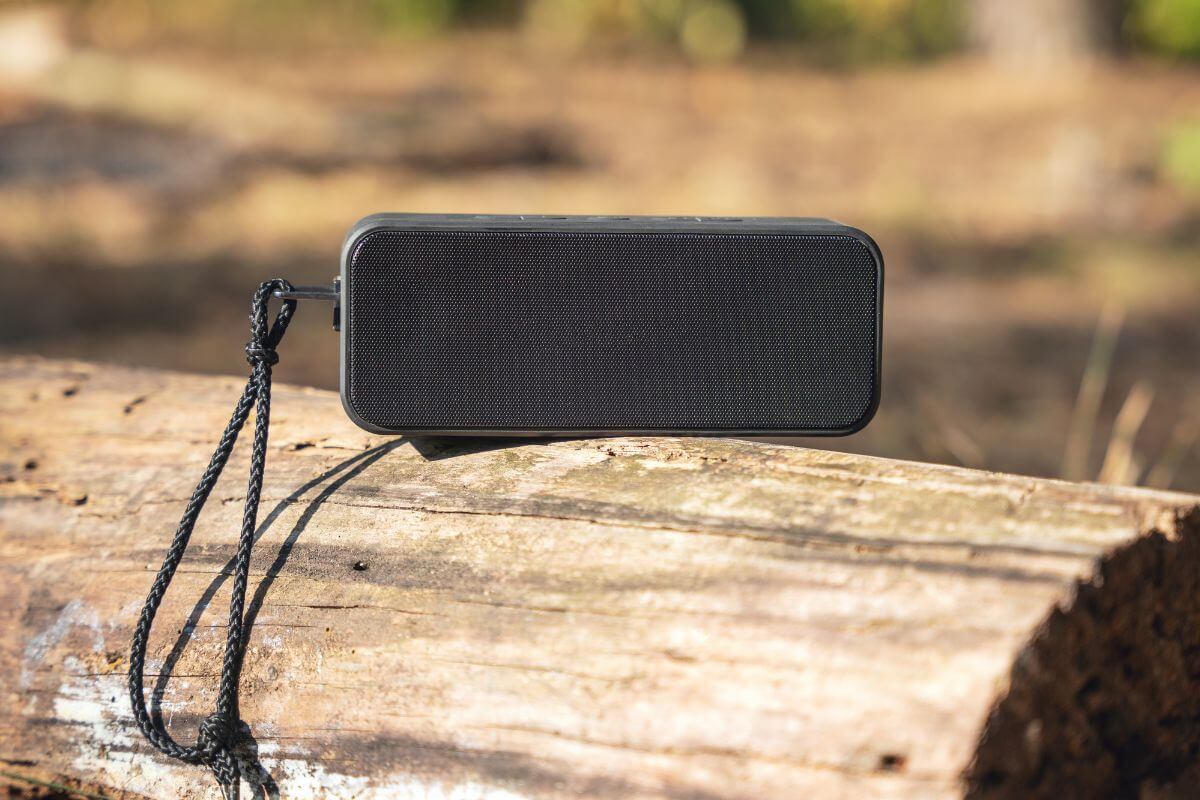
It’s a no-go to use any recorded or electrically amplified bird or animal calls or sounds, or even imitations of these sounds, to assist in the hunting, taking, killing, or capturing of most wildlife.
But, there’s always an exception to the rule. You can use these recorded calls for predatory animals, wolves, and birds not protected by state or federal law. So, if you’re after a coyote or a crow, you’re in the clear. But if it’s duck or deer hunting in Montana you’re after, leave the Bluetooth speaker at home.
This regulation isn’t just about leveling the playing field between hunter and hunted. It’s also about respecting the natural rhythms and behaviors of wildlife. Montana is known for its pristine wilderness, and these regulations are designed to keep it that way.
30. Restitution for Unlawfully Taken Wildlife
| Game Animals | Restitution Cost |
| Bighorn Sheep | $30,000 |
| Antlered Deer | $8,000 |
| Elk | $8,000 |
| Grizzly Bear | $8,000 |
| Moose | $6,000 |
| Mountain Goat | $6,000 |
| Antelope | $2,000 |
Montana’s hunting regulations aren’t just about bag limits and seasons; they also touch on the serious matter of restitution for unlawfully taken wildlife. If you or a member of your hunting party accidentally or intentionally takes an animal unlawfully, you’re on the hook for more than just a slap on the wrist.
So, what should you do if you find yourself in this unfortunate situation? The first step is to notify a Fish, Wildlife & Parks (FWP) game warden immediately. They’re the experts in handling these delicate matters and will guide you through the necessary steps.
Rest assured, the vast majority of hunters never have to deal with these situations. But knowing the rules and being prepared for the unexpected is part of being a responsible hunter in Big Sky Country.
31. Sale of Game Animals
In the intricate world of hunting regulations, there’s one rule that’s as clear as day: you can’t put a price tag on your game animals. The Montana Fish, Wildlife & Parks prohibits the sale, purchase, or exchange of game animals, birds, and fish. However, there are a few exceptions that allow you to trade or sell certain parts or by-products of your hunt.
What Part of a Game Animal You Can Sell:
- Hides, heads, or mounts from lawfully taken game animals, except grizzly bears.
- Naturally shed antlers or antlers with a skull or portion of a skull attached from a game animal that died of natural causes and not unlawfully killed, captured, or taken.
What Part of a Game Animal You Can’t Sell:
- Meat. The sale of any game animal meat is strictly prohibited.
The ban on selling game animal meat is a conservation practice. By prohibiting the sale of meat, Montana ensures that hunting remains a sustainable and ethical practice, prioritizing the management of wildlife populations over commercial gain.
32. Simulated Wildlife
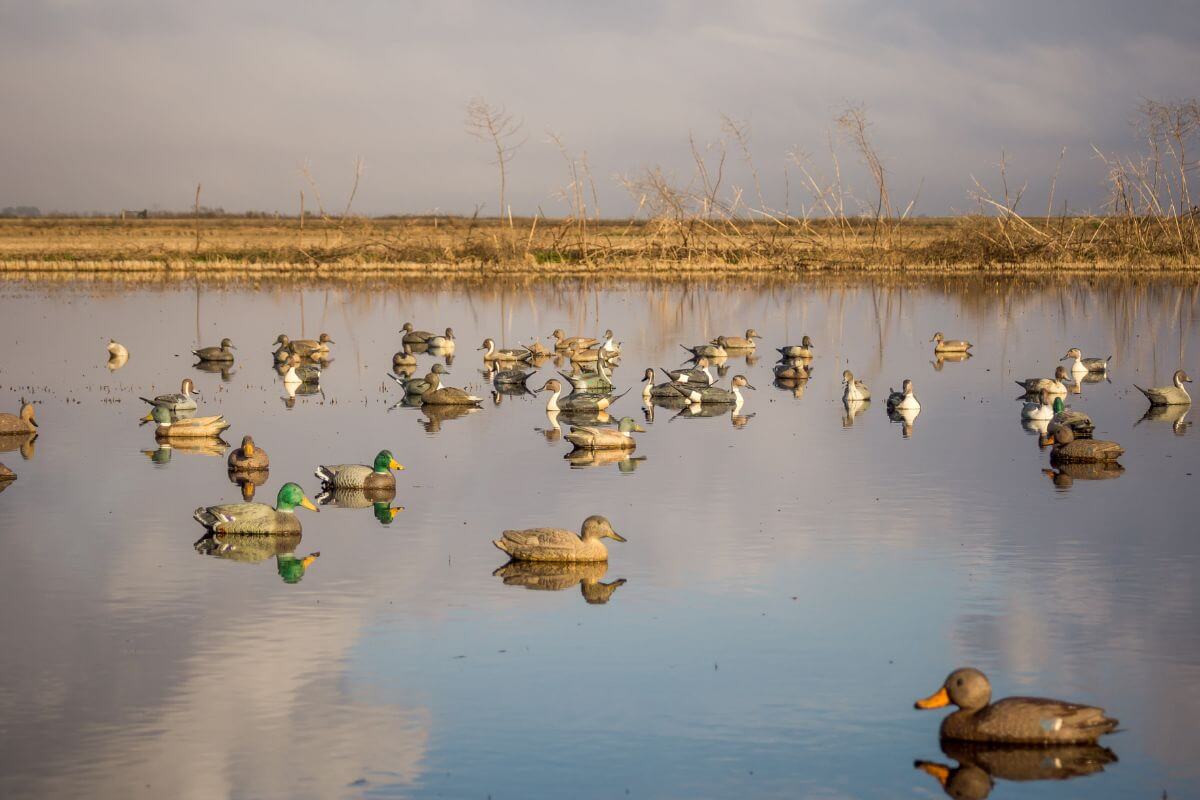
Ever been out hunting and come across what you thought was a perfect shot, only to find out it was a decoy? It’s a common scenario, but here’s the thing – Montana law isn’t too keen on you taking that shot.
Montana’s hunting regulations, specifically ARM and F&W Commission rules, make it illegal to shoot at simulated wildlife decoys in a manner that violates any statute or rule governing the hunting of that particular wildlife.
This may seem like a minor detail, but it’s all about ethical and safe hunting. Shooting at decoys can lead to reckless behavior and even endanger real wildlife or other hunters in the area.
I’ve seen decoys used by wildlife agencies to monitor hunter compliance and behavior. It’s a smart tactic, but it also underscores the importance of respecting these regulations.
33. Two-Way Communication
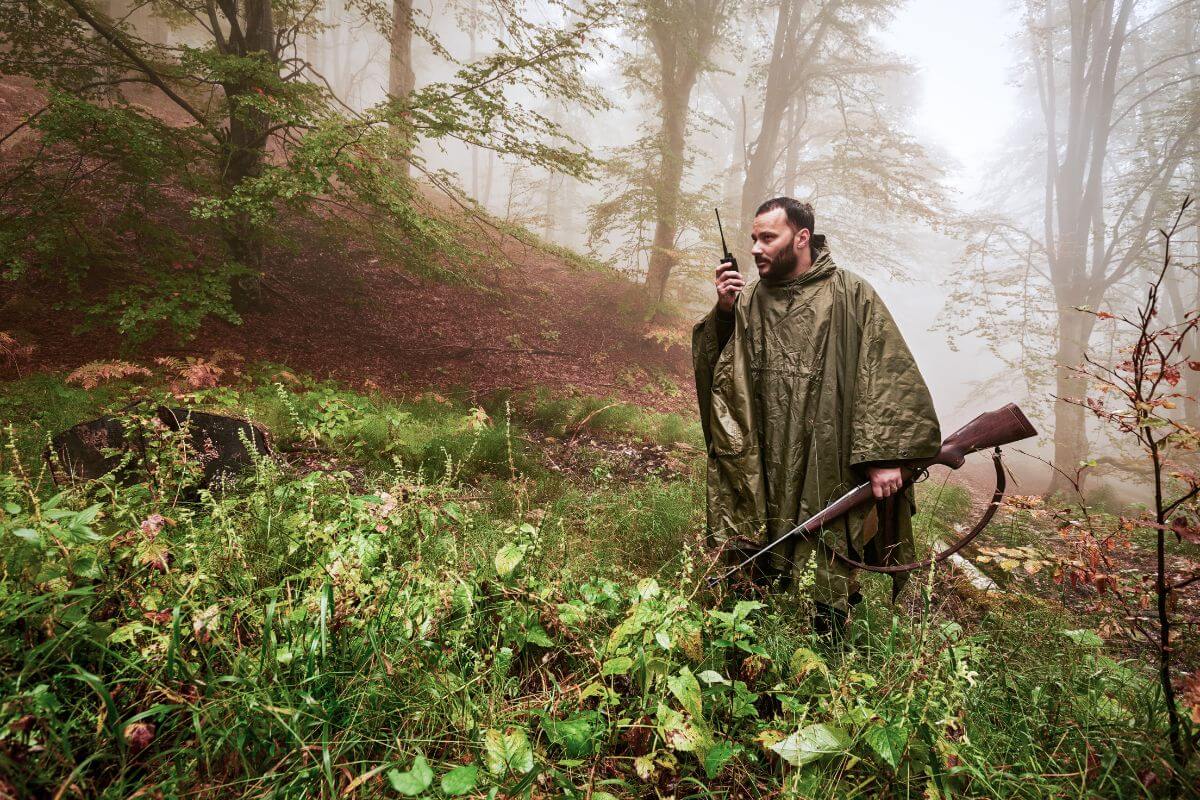
When you’re out in the Montana wilderness, it’s just you, your wits, and the call of the wild, right? Not quite. While modern technology can be a boon for safety and coordination, the Montana Fish, Wildlife & Parks (FWP) has some clear guidelines on the use of two-way electronic communication.
What’s Prohibited Regarding Two-Way Communication:
- Using any form of two-way electronic communication during the hunting of game animals or wolves to aid in their taking or locating.
- Avoiding game check stations or FWP enforcement personnel.
- Facilitating unlawful hunting activity.
You can still use two-way electronic communication for safety or other legitimate purposes. So, if you need to check in with your hunting party or call for help, you’re in the clear.
Two-way electronic communication includes radios (walkie-talkies/CB), cell phones, text messages, and even the use of social media or other electronic platforms, applications, or programs. The FWP isn’t trying to stifle your ability to stay safe or connected; they just want to ensure a level playing field when it comes to hunting.
34. Waste of Game
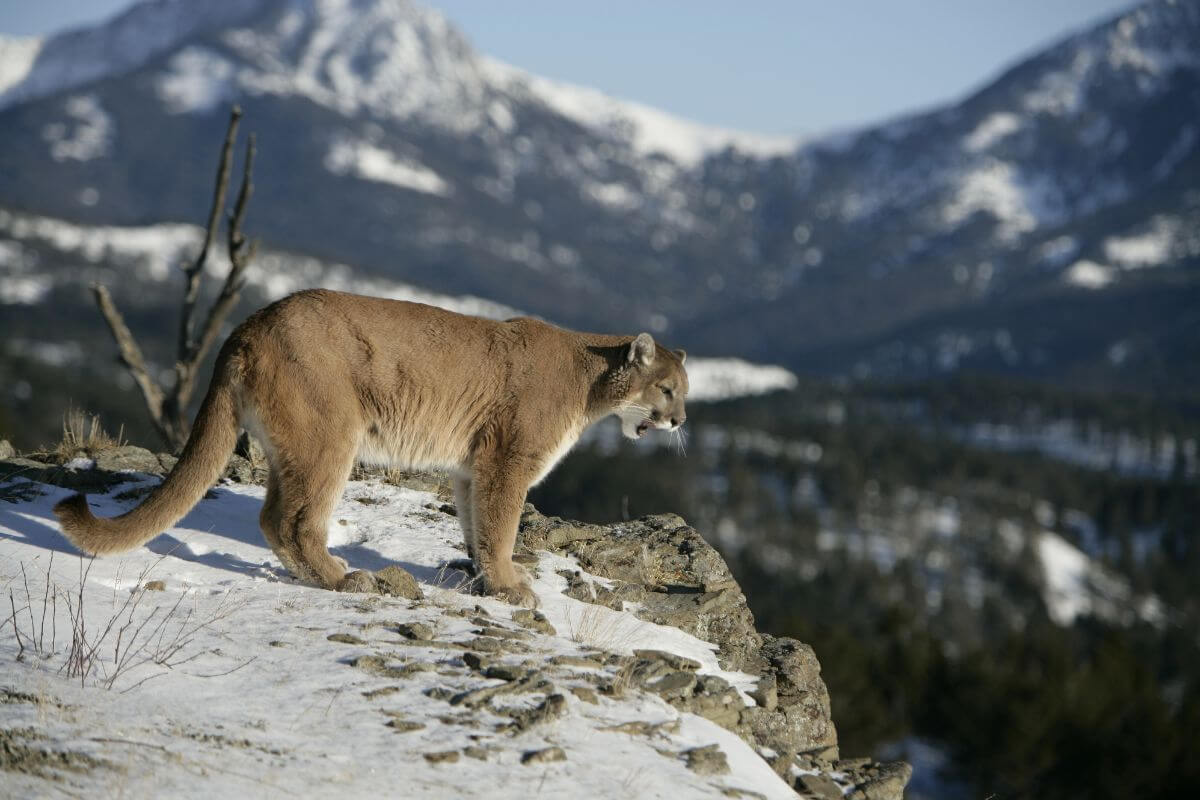
In Montana, it’s crucial to remember that every part of a game animal deemed “suitable for food” must be treated with respect. The last thing you want is to break the law or, worse, waste a precious resource.
For game animals except mountain lions, everything from the 4 quarters above the hock to the loin and backstrap is classified as “suitable for food.” This means you should aim to utilize these parts or ensure they’re fit for human consumption before discarding them.
It’s not just about following the rules; it’s about honoring the animal you’ve hunted. By being mindful of what you can and can’t discard, you’re not just staying on the right side of the law; you’re also making sure nothing goes to waste.
35. Weapons Restriction Areas
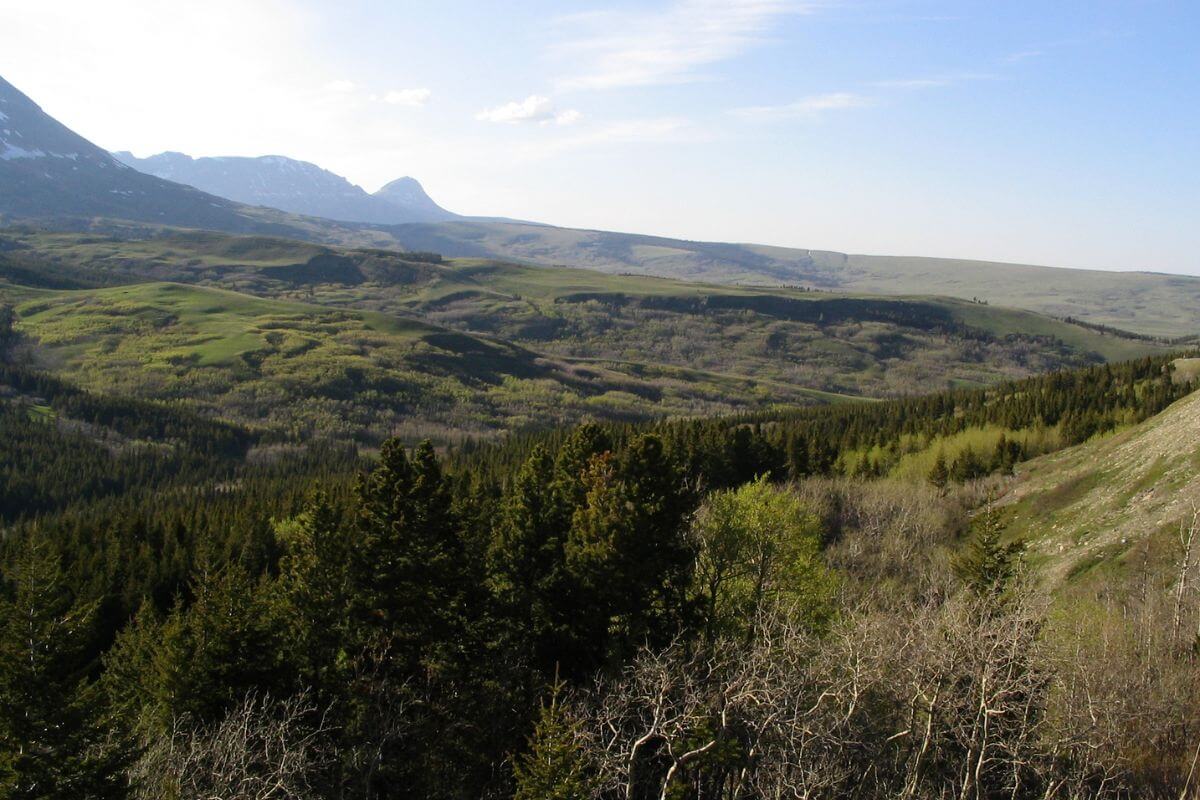
When you’re in the Montana hunting groove, it’s crucial to be aware of where you can and can’t let your bullets fly. Weapons restrictions are like the guardrails of hunting, ensuring safety and respect for different zones.
Key Things to Know About Weapons Restriction Areas in Montana:
- Indian Reservations – Montana’s Indian Reservations are a prime example of areas with hunting restrictions. These limitations are put in place by the Fish and Wildlife Commission and are often non-negotiable. However, if there’s a cooperative agreement between the Tribal Government and the State of Montana, you might get lucky with limited access.
- Permits and Licenses – Don’t despair if your favorite hunting spot falls under a restricted area or time period. You can often apply for a permit or license that gives you limited access, like a golden ticket to a hunting wonderland.
- Equipment Guidelines – Restrictions on weapons are applicable in certain hunting districts. These restrictions are mentioned in the license/permit description and may also be associated with a specific date range.
These equipment restrictions apply to Weapons Restriction Areas:
- Crossbows – Crossbows are allowed to be carried in restricted areas unless there is a specific exception mentioned in the hunting district regulations.
- Traditional Handguns – It is not possible to attach traditional handguns to one’s shoulder, and they have a barrel length of less than 10 ½ inches. They are designed to use only straight wall cartridges and are not originally intended for use as rifles.
- Muzzleloader – The muzzleloader should have a caliber of at least .45 and it should not have more than 2 barrels.
- Shotgun – The shotgun must be shouldered, breech-loaded, or muzzle-loaded. It should also have a smooth bore and/or a rifled barrel and/or rifled choke device to fire shots or slugs.
Understanding these weapons restrictions isn’t just about following the rules – it’s also about respecting the land and the communities that call it home. So, before you head out, do a quick double-check to ensure you’re on the right side of the law. And remember, a little extra effort in understanding the regulations can lead to a more rewarding and hassle-free hunting experience.
36. Game Damage Hunt Roster Rules
Ever heard of the Game Damage Hunt roster? It’s like the VIP list for hunters who are ready to roll up their sleeves and help manage wildlife populations. If the Montana Fish, Wildlife & Parks (FWP) determines that a game damage hunt is necessary, they’ll pick hunters from this special list.
If you’re passionate about conservation and want to make a tangible impact, getting your name on this list is the first step. The sign-up period is your golden ticket, so mark your calendar and make sure you don’t miss the boat.
Here’s a quick rundown of what you need to know about Game Damage Hunt roster rules:
- What – The game damage hunt roster is a randomized list of hunters’ names.
- When to Sign Up – Sign-up for the roster is open from June 15 to July 15, 2024.
- How to Sign Up – Keep an eye on the FWP website for the sign-up process.
- If Selected – FWP will contact you directly with further instructions.
So, when the sign-up period rolls around, don’t hesitate. It’s your chance to be part of something bigger, to protect Montana’s natural beauty while doing what you love. Who knows, you might just be the next name on the game damage hunt roster.
Montana Hunting Contacts
When it comes to hunting in Montana, having the right contacts can make all the difference. Whether it’s to report your harvest, check permit quota or hunting district quota statuses, or get your hands on a hunting license, these are the numbers you’ll want to have on speed dial.
For the Montana Fish, Wildlife & Parks State Headquarters:
- Address – 1420 East 6th Avenue, PO Box 200701, Helena, MT 59620-0701
- Contact Number – 406-444-2535
For specific departments within Montana FWP, refer to the chart below:
| FWP Department | Contact Number |
| Harvest Reporting | 1-877-FWP-WILD (1-877-397-9453) or 406-444-0356 |
| Quota Status | 1-800-385-7826 or 406-444-1989 |
| Hunter Education | 406-444-9948 |
| Wildlife | 406-444-2612 |
| Enforcement | 406-444-2452 |
| Montana State Parks | 406-444-3750 |
| Drawings | 406-444-2950 |
| Licenses | 406-444-2535 |
| Hearing Impaired (use Montana Relay) | 7-1-1 or 1-800-253-4091 |
For hunting district details, local regulations, and specific hunting advice tailored to your area, Montana FWP regional offices are your go-to. So, if you’re planning a hunt in a new region or just need some local intel, don’t hesitate to reach out to these numbers below.
Regional Offices for Montana Fish, Wildlife & Parks:
| Montana FWP Regional HQ | Address | Contact Number |
| Region 1 | 490 N Meridian Rd, Kalispell, MT 59901 | 406-752-5501 |
| Region 2 | 3201 Spurgin Rd, Missoula, MT 59804 | 406-542-5500 |
| Region 3 | 1400 South 19th.Ave, Bozeman, MT 59718 | 406-577-7900 |
| Region 4 | 4600 Giant Springs Rd, Great Falls, MT 59405 | 406-454-5840 |
| Region 5 | 2300 Lake Elmo Dr, Billings, MT 59105 | 406-247-2940 |
| Region 6 | 1 Airport Rd, Glasgow, MT 59230 | 406-228-3700 |
| Region 7 | 352 I-94 Business Loop, PO Box 1630, Miles City, MT 59301 | 406-234-0900 |
Remember, hunting isn’t just about the chase; it’s about being responsible and well-informed. These contacts and regional offices are your hunting allies, ensuring you have a safe, successful, and enjoyable time in Montana’s great outdoors.
Montana Hunting Regulations Final Thoughts

In Montana, understanding and abiding by hunting regulations isn’t just a legal necessity; it’s a vital step in preserving the state’s rich wildlife and ensuring a fair, ethical hunting environment. From respecting the skies by refraining from hunting in aircraft to following rules on archery equipment and artificial light, each regulation plays a crucial role in maintaining sustainable hunting practices.
These regulations are more than just words on paper; they represent a commitment to wildlife conservation, responsible hunting, and the continuation of Montana’s storied hunting heritage. By embracing and respecting these rules, hunters not only stay on the right side of the law but also contribute to the long-term health and diversity of Montana’s game populations.
So, as you plan your next hunting adventure in the Treasure State, remember that every action you take in the field, from the skies above to the ground below, has a ripple effect on Montana’s natural world.
By honoring these regulations, you’re not just a hunter; you’re a steward of Montana’s wild beauty, ensuring that future generations can continue to experience the thrill of the hunt in a state that truly lives up to its “Big Sky Country” nickname.
Discover more insightful content about Montana with the following reads:
- Hunting Seasons in Montana
- Montana Muzzleloader Season
- Montana OTC Bighorn Sheep
- Montana Elk Hunting
- Is Hunting Allowed on Montana State Land?
- https://fwp.mt.gov/binaries/content/assets/fwp/hunt/regulations/2024/2024-dea-regulations-final-for-web-with-web-quality-maps.pdf
- https://fwp.mt.gov/binaries/content/assets/fwp/hunt/regulations/2024/2024-2025-legal-descriptions-final-for-web.pdf
- https://fwp.mt.gov/hunting/regulations
- https://www.flickr.com/photos/yellowstonenps/50402105061/
- https://www.flickr.com/photos/kenlund/66275195

